PHOTO SERIES: THE FEMALE EXPERIENCE OF WAR
To mark International Women’s Day, Save the Children released a powerful series of photographs entitled “The Female Experience of War” to highlight the unique experiences of girls growing up in conflict.
Award-winning photographers Lynsey Addario, Alessandra Sanguinetti and Esther Mbabazi have travelled through some of the world’s toughest conflict zones with us this year to document the inspiring stories of young women and girls living through war and the challenges they face.
The images capture stories of loss and sadness, but also the girls’ strength, resilience and hope for the future. Travelling across Asia, the Middle East and Africa, the photographers embedded themselves in the children’s families, capturing some of their most intimate moments as they went about their daily lives.
Hana*, 14 years old, from Gaza
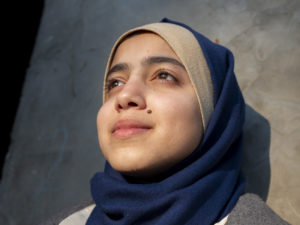
In 2014, when Hana* was just eight years old, she lost her mother and four young brothers in an airstrike. The blast threw her over 200 meters, breaking both her arms and leaving her with a serious head injury. Following the incident, Hana* suffered from severe insomnia, flashbacks and Post Traumatic Stress Disorder and has been supported by Save the Children’s partner, MA’AN Development Centre, in her treatment.
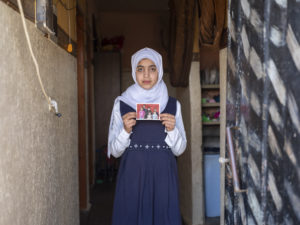
Hana*, holds up a photo of herself with the family members who were lost in an airstrike, Gaza. Credit: Alessandra Sanguinetti / Save the Children
To cope with the loss of her mother and four siblings, Hana* writes poetry. Hana* says she finds inspiration from the beach to write. Hana* says education is the biggest challenge for girls in Gaza, as many are forced to stay at home with their families or simply cannot afford to go to school. “Education is like a weapon in a person’s hand,” she says. Hana* wants to be a doctor to help the people of Gaza when she has finished school. She is top of her class and regularly enters poetry competitions.
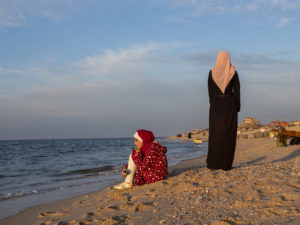
Hana*, and her case worker on the beach where she likes to go and write, in Gaza. Credit: Alessandra Sanguinetti / Save the Children
Girls are more than twice as likely as boys to be out of school if they live in conflict areas, one in five female refugees have experienced sexual violence [3]and nine out of ten countries with the highest rates of child marriage are conflict affected states[4].
Crimes committed against girls and boys in conflict are at their highest since records began, a disturbing trend revealed by Save the Children’s latest report on the theme of Stop the War on Children. Children are more likely now than ever to be killed, maimed, recruited into armed groups, sexually abused or have their schools attacked.
Shabana*, 14, from Kabul, Afghanistan
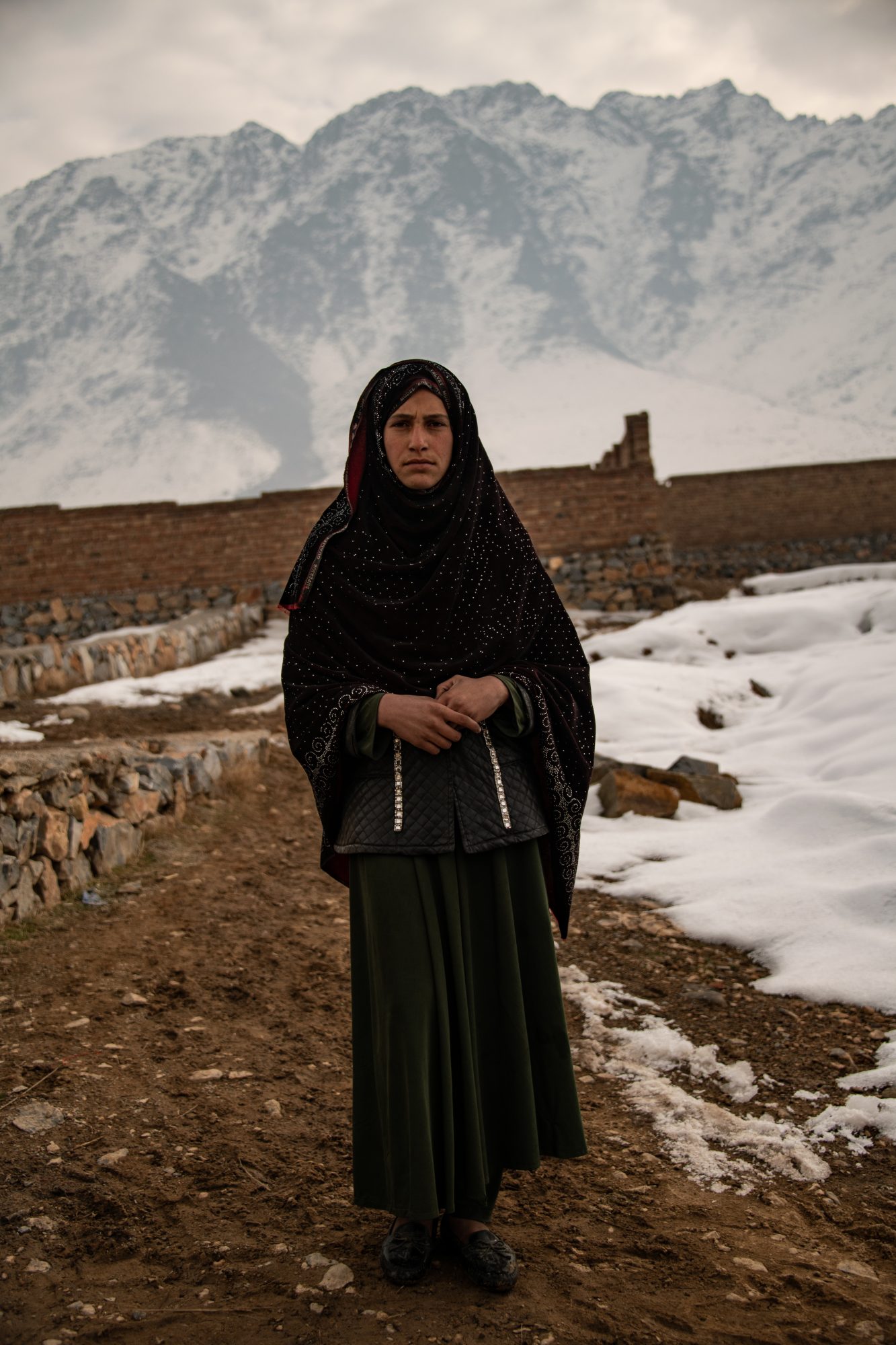
Shabana*, 14, poses for a portrait outside her home in a village outside of Kabul. Credit: Lynsey Addario / Save the Children
Shabana’s* family fled Logar province because of ongoing fighting and insecurity; her memories include constant fighting, the smell of gunfire, armed men entering the family home, and her three brothers being shot and wounded by armed opposition groups before the family fled Logar province for Kabul. Shabana’s* three brothers were all in the Afghan National Army, and were shot during fighting with armed opposition groups.

Shabana*, 14, fetches water for the household before going to a school sponsored by Save the Children in a village outside of Kabul. Credit
Lynsey Addario / Save the Children
“War is a very horrifying thing,” says Shabana*. She describes her family as being “imprisoned in their homes” while fighting raged outside, all the time fearing that bullets would hit them. One night a grenade landed on her neighbour’s house, hitting the little girl living there. Her brothers have all been wounded in the war, with her older brother being shot in the shoulder.
As a girl, Shabana* was banned from attending school by armed groups and the frequent bomb attacks also made it too dangerous for her to get there. Early one morning the family loaded their truck and left home, living for almost a week in a tent before finding a house to move into in Kabul. Here, Shabana* was able to enrol in a Save the Children school aimed at supporting girls (and boys) to return to mainstream education. She says it’s a “beautiful” school with “good teachers” and she “studies well.”
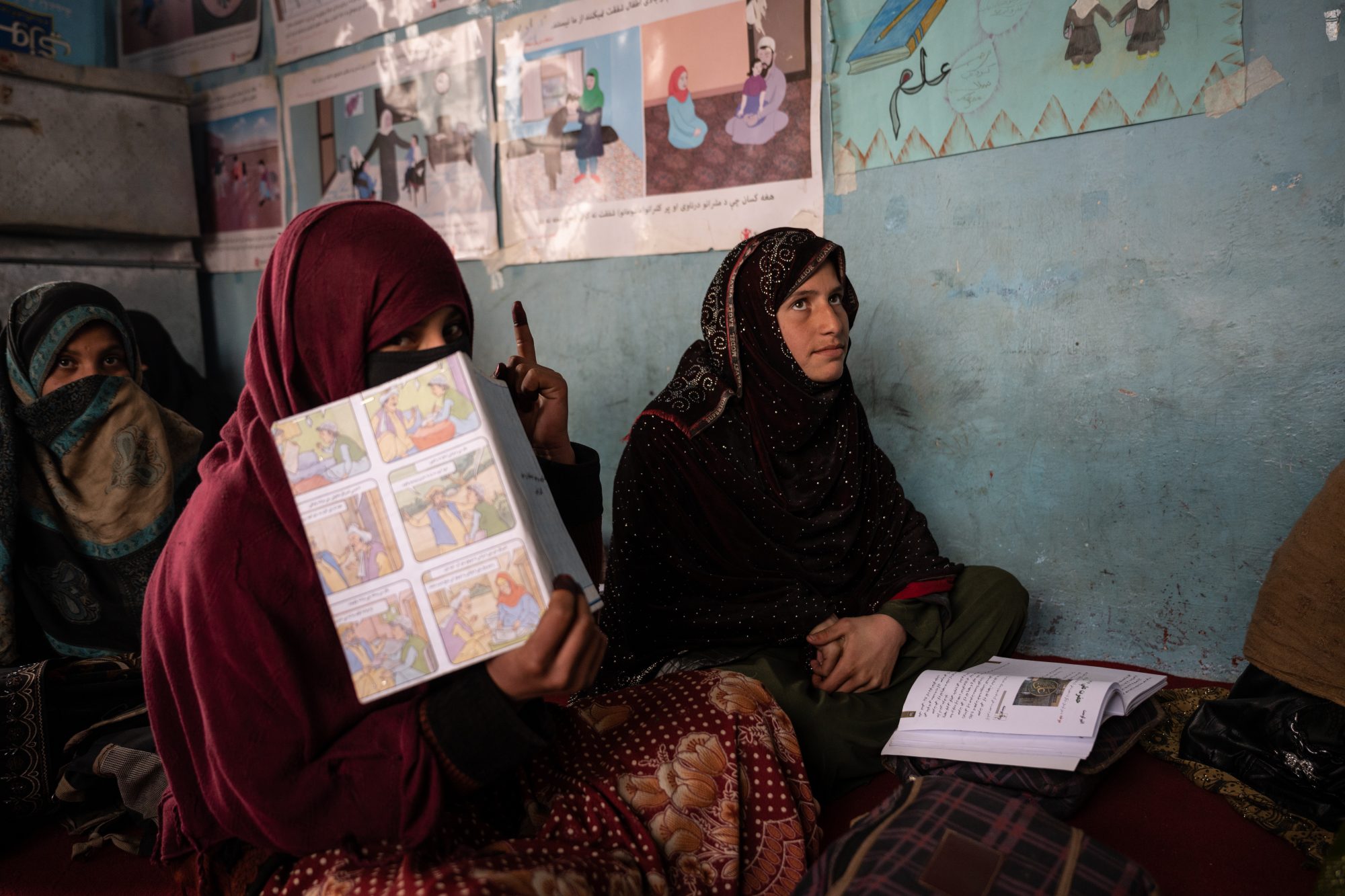
Shabana* hopes to become a doctor or teacher, to give back to her community. “Here, we started a good life,” she says.
Over 400 million children are currently growing up in conflict zones, that’s almost 1 in 6 young lives and more than half of them are girls. Girls and young women in conflict are uniquely impacted by the horrors of war, facing the increased threat of sexual violence, risk of early marriage and the denial of their basic human rights including access to healthcare and getting an education.
Helen*, 15 from the Democratic Republic of Congo (DRC)
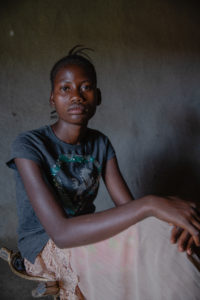
Helen*, 15 and her sister Rita*, 9 lived in the DRC with their parents where she says “life was good”. But when war broke out in early 2018, the family were forced to flee. Helen* recalls men with machetes rampaging through their village, ‘cutting’ the men, and raping the women.
In the chaos, the sisters, who were just 13 and 6 at the time, became separated from their parents and later heard they had been killed. Day and night the pair were on the run from violent rebels, without sleep and with barely any food or water. They reached Uganda by boat and settled in a house/tent with dozens of other people for around a month before arriving at Kyaka II Refugee Settlement.
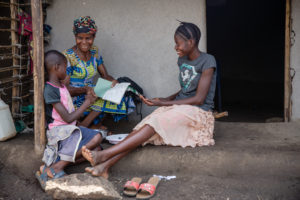
When their neighbours from Congo arrived one day at the refugee centre, Helen* recognized them. One of them was Prudence* who was looking for her own two daughters, from whom she’d been separated.
Prudence* began to visit the young sisters every day at the reception centre, bringing them fish to eat. When she found out they’d lost their parents, Prudence* decided to foster them. Helen* says she “felt happiness”.
Helen* suffers flashbacks to the horror she’s witnessed. When this happens she tries to distract herself by finding children to play with, so that she will get tired and “stop thinking”. Helen* is delighted to be back at school – she loves mathematics and English. Helen* has big dreams for herself and Rita* and wants them both to become doctors or teachers.
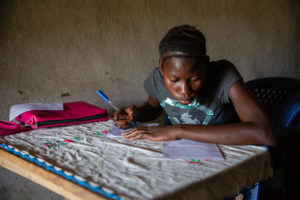
Helen* studying at home in Kyaka II refugee settlement. Credit: Esther Ruth Mbabazi/ Save the Children
A Save the Children caseworker visits the girls and provides them with psychological support, due to the trauma they suffered in the DRC. Helen* also attends the Save the Children Child Friendly Space where she can learn, play and meet with other children.


